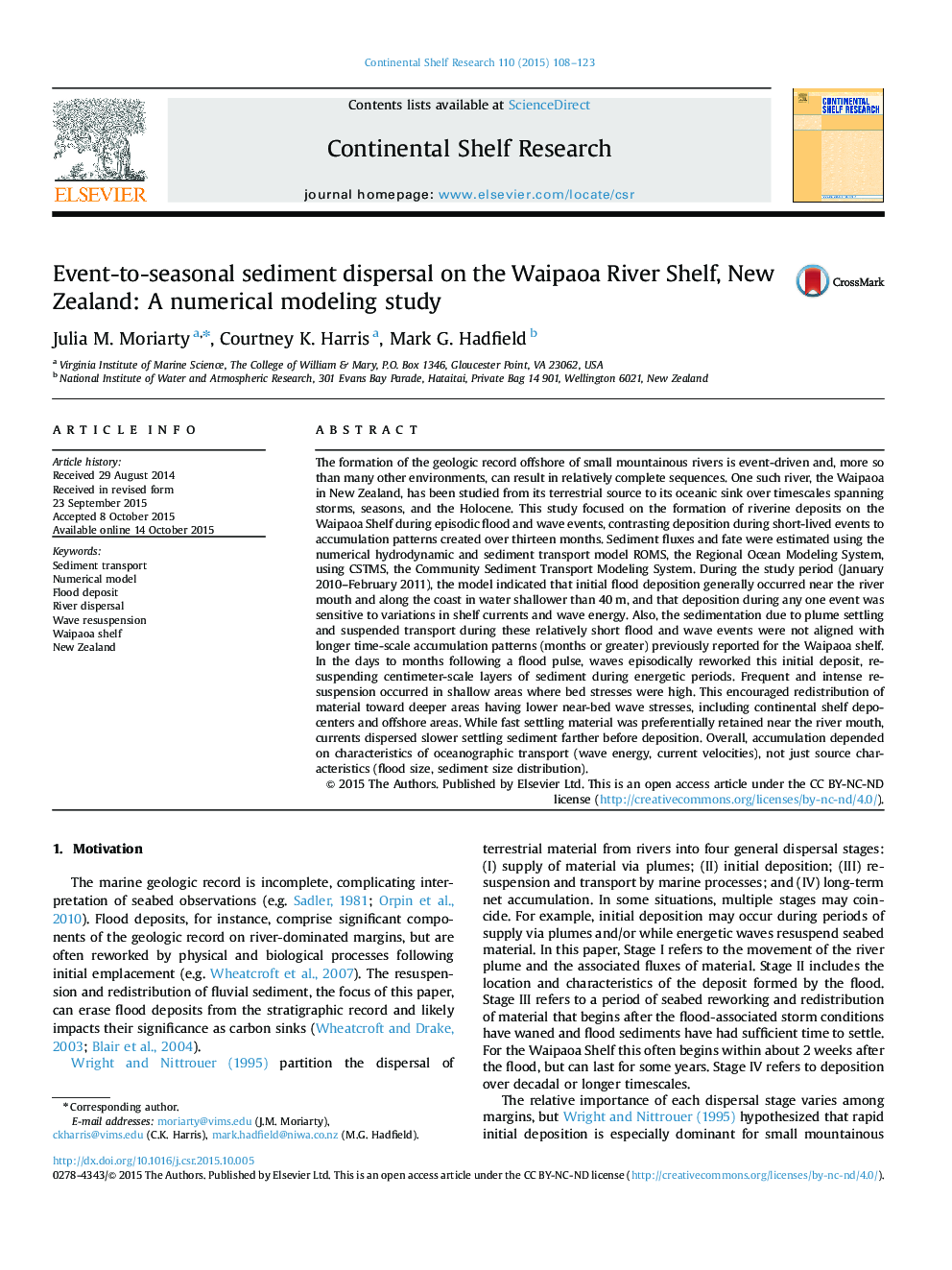| کد مقاله | کد نشریه | سال انتشار | مقاله انگلیسی | نسخه تمام متن |
|---|---|---|---|---|
| 6382981 | 1626102 | 2015 | 16 صفحه PDF | دانلود رایگان |
- Modern wave-induced bed stress patterns were related to longer-term depositional patterns.
- Deposition over days to seasons was not aligned with year-to-century accumulation.
- Resuspension in water depths <20Â m occurred nearly constantly.
- Enhanced shallow-water resuspension encouraged sediment fluxes to areas>30Â m depth.
- Initial Waipaoa flood deposits varied, depending on wind and larger-scale currents.
The formation of the geologic record offshore of small mountainous rivers is event-driven and, more so than many other environments, can result in relatively complete sequences. One such river, the Waipaoa in New Zealand, has been studied from its terrestrial source to its oceanic sink over timescales spanning storms, seasons, and the Holocene. This study focused on the formation of riverine deposits on the Waipaoa Shelf during episodic flood and wave events, contrasting deposition during short-lived events to accumulation patterns created over thirteen months. Sediment fluxes and fate were estimated using the numerical hydrodynamic and sediment transport model ROMS, the Regional Ocean Modeling System, using CSTMS, the Community Sediment Transport Modeling System. During the study period (January 2010-February 2011), the model indicated that initial flood deposition generally occurred near the river mouth and along the coast in water shallower than 40Â m, and that deposition during any one event was sensitive to variations in shelf currents and wave energy. Also, the sedimentation due to plume settling and suspended transport during these relatively short flood and wave events were not aligned with longer time-scale accumulation patterns (months or greater) previously reported for the Waipaoa shelf. In the days to months following a flood pulse, waves episodically reworked this initial deposit, resuspending centimeter-scale layers of sediment during energetic periods. Frequent and intense resuspension occurred in shallow areas where bed stresses were high. This encouraged redistribution of material toward deeper areas having lower near-bed wave stresses, including continental shelf depocenters and offshore areas. While fast settling material was preferentially retained near the river mouth, currents dispersed slower settling sediment farther before deposition. Overall, accumulation depended on characteristics of oceanographic transport (wave energy, current velocities), not just source characteristics (flood size, sediment size distribution).
Journal: Continental Shelf Research - Volume 110, 1 November 2015, Pages 108-123
